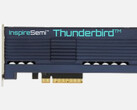RIKEN, Fujitsu, and Nvidia have announced a collaboration for the FugakuNEXT supercomputer, essentially the first Japanese flagship system to adopt GPUs as accelerators. The new supercomputer is set to be the successor to Japan’s Fugaku supercomputer (currently ranked 7th globally) with a development budget of approximately JP¥110 billion (approximately $740 million at current exchange rates). The new supercomputer is set to operate at RIKEN’s Kobe campus around 2030.
The FugakuNEXT supercomputer targets 600 exaFLOPS (EFLOPS) in FP8 precision (sparse) and is expected to be the world’s first "zetta-scale" supercomputer with an overall application performance increase of over hundred-fold when compared to the current Fugaku supercomputer. The FugakuNEXT achieves this performance increase through a combination of five-fold hardware improvements and ten-to-twenty-fold gains from software optimizations. Efficiency is also expected to stay the same with a power envelope of 40MW.
Powering the new supercomputer will be Fujitsu’s new FUJITSU-MONAKA-X CPUs, the successor to the still-under-development MONAKA CPU. Nvidia will design the GPU accelerators with high-bandwidth integration, complete with NVLink Fusion technology for CPU-GPU interconnect. Advanced memory technologies and cutting-edge connection systems will be utilized to create a Hybrid AI-HPC platform that combines both simulation and AI capabilities.
FugakuNEXT will be built on an "AI for Science" platform for automated research processes with applications such as earthquake simulation, manufacturing optimization, and climate modeling. The project represents Japan's strategic investment in semiconductor sovereignty, fostering international collaboration with the US Department of Energy, and developing a global AI-HPC ecosystem.
The basic design for the supercomputer is expected to be completed by 2025, with the detailed design phase starting in 2026. System operation is expected to start around 2030. A virtual cloud environment, called 'Virtual Fugaku', will be offered to support early software development with potential future integration of quantum computing for hybrid QC-HPC capabilities.
Source(s)
RIKEN (in English)

























